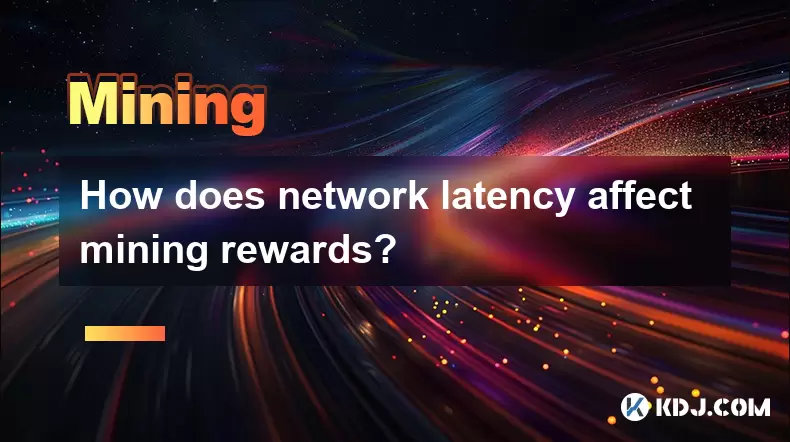-
 Bitcoin
Bitcoin $119,448.2396
0.27% -
 Ethereum
Ethereum $2,992.9919
0.78% -
 XRP
XRP $2.9074
1.58% -
 Tether USDt
Tether USDt $1.0001
0.00% -
 BNB
BNB $687.9097
-0.40% -
 Solana
Solana $161.5804
-0.47% -
 USDC
USDC $0.9998
0.01% -
 Dogecoin
Dogecoin $0.1948
-2.10% -
 TRON
TRON $0.3013
-0.08% -
 Cardano
Cardano $0.7286
-3.16% -
 Hyperliquid
Hyperliquid $47.3153
-3.81% -
 Stellar
Stellar $0.4543
-9.79% -
 Sui
Sui $3.8809
5.63% -
 Chainlink
Chainlink $15.6262
-0.55% -
 Hedera
Hedera $0.2368
-5.31% -
 Bitcoin Cash
Bitcoin Cash $501.2030
-0.80% -
 Avalanche
Avalanche $21.0650
-1.43% -
 UNUS SED LEO
UNUS SED LEO $9.0006
-0.39% -
 Shiba Inu
Shiba Inu $0.0...01310
-1.90% -
 Toncoin
Toncoin $3.0040
1.56% -
 Litecoin
Litecoin $93.8936
-1.20% -
 Monero
Monero $341.8918
1.27% -
 Polkadot
Polkadot $3.9087
-3.05% -
 Uniswap
Uniswap $8.9599
4.78% -
 Dai
Dai $0.9999
0.02% -
 Ethena USDe
Ethena USDe $1.0005
-0.02% -
 Bitget Token
Bitget Token $4.3954
-0.14% -
 Pepe
Pepe $0.0...01207
-2.26% -
 Aave
Aave $314.5223
1.72% -
 Bittensor
Bittensor $408.6988
2.76%
How does network latency affect mining rewards?
High network latency in cryptocurrency mining can reduce rewards by delaying block propagation, leading to orphaned blocks and missed validations.
Jul 15, 2025 at 06:00 am

Understanding the Role of Network Latency in Cryptocurrency Mining
Network latency refers to the time delay that occurs when data is transmitted across a network. In cryptocurrency mining, this concept becomes critical because mining operations depend heavily on rapid communication between miners and the blockchain network. When a miner solves a block, they must propagate their solution to other nodes quickly. High latency can cause delays in this process, which may result in the miner losing the race to have their block accepted.
Mining rewards are distributed to the first miner whose block is validated and added to the blockchain. Therefore, even a slight delay due to high network latency can lead to missed rewards, especially in highly competitive environments where multiple miners are racing to solve the same block.
The Relationship Between Block Propagation and Network Delay
When a miner successfully mines a block, the next step involves broadcasting that block to the rest of the network. Block propagation speed depends largely on network conditions, including bandwidth, node distribution, and overall latency. If a miner experiences high latency, their mined block may reach other nodes after competing blocks have already been accepted.
This scenario leads to what is known as an orphaned block — a valid block that is not added to the main chain because another block was accepted first. Miners who frequently experience delayed block propagation due to latency issues will see reduced effective mining rewards over time, as their blocks are more likely to be orphaned.
Impact of Geographic Location on Mining Performance
Geographic proximity plays a significant role in network latency. Miners located closer to major network hubs or pools typically enjoy lower latency, giving them a slight edge in block submission timing. Conversely, miners in remote locations with limited infrastructure may suffer from higher ping times and slower data transfer rates.
To mitigate this, some miners choose to connect to mining pools that are geographically closer. Optimizing connection points and using Content Delivery Networks (CDNs) for pool servers can help reduce latency. Additionally, selecting a mining pool with global server nodes can improve synchronization and reduce the risk of late block submissions.
Technical Solutions to Minimize Latency Effects
There are several technical strategies miners can adopt to reduce the impact of network latency:
- Use low-latency Virtual Private Servers (VPS) located near major mining pools.
- Optimize local network settings, such as reducing DNS lookup times and enabling TCP optimizations.
- Upgrade internet connections to ensure sufficient bandwidth and minimal jitter.
- Implement stratum protocol improvements, like Stratum V2, which enhance efficiency and reduce communication overhead.
- Utilize peer-to-peer (P2P) networks designed specifically for faster block transmission among miners.
These measures can significantly improve the responsiveness of mining operations, helping miners stay competitive even under high network demand.
Pool Selection and Its Influence on Reward Consistency
Choosing the right mining pool is crucial for minimizing the negative effects of network latency. Larger pools often have better infrastructure and global node distribution, which helps in faster block propagation. However, these pools also tend to have more participants, which means individual rewards may be smaller due to shared payouts.
On the other hand, smaller pools might offer larger individual rewards but could suffer from less optimized networks, leading to increased latency and orphan rates. It’s important for miners to evaluate both the geographical positioning of the pool's servers and their historical performance in terms of block confirmation speed before committing resources.
Frequently Asked Questions
Q: Does network latency affect all types of mining equally?
A: No, different consensus algorithms and mining protocols respond differently to latency. For example, Proof-of-Work (PoW) chains like Bitcoin are more sensitive to block propagation delays than newer systems using optimized consensus mechanisms.
Q: Can I measure my current network latency to a mining pool?
A: Yes, you can use tools like ping or traceroute to check your latency to a mining pool's server. Some mining software also includes built-in diagnostics to assess connection quality.
Q: Are there specific mining software options that handle latency better?
A: Some modern mining clients implement features like low-level network tuning and adaptive stratum protocols, which can help mitigate latency issues. Examples include BFGMiner and newer versions of CGMiner.
Q: How much of an impact does a 50ms increase in latency have on mining profitability?
A: While exact figures vary depending on network congestion and block difficulty, studies suggest that a 50ms increase in latency can reduce effective mining rewards by up to 3% due to increased orphan rates and slower synchronization.
Disclaimer:info@kdj.com
The information provided is not trading advice. kdj.com does not assume any responsibility for any investments made based on the information provided in this article. Cryptocurrencies are highly volatile and it is highly recommended that you invest with caution after thorough research!
If you believe that the content used on this website infringes your copyright, please contact us immediately (info@kdj.com) and we will delete it promptly.
- BDAG X1 App Skyrockets, SHIB Rebounds, and XMR Holds Strong: What's Happening?
- 2025-07-15 07:10:12
- Ruvi AI: The Audited Token Set to Outshine Ethereum with Massive Gains?
- 2025-07-15 06:50:12
- DeFi Token with 10X Potential: Mutuum Finance and the Year-End Opportunity
- 2025-07-15 06:50:12
- Bitcoin's Wild Ride: $120K Surge, Crypto Bill Buzz, and What It All Means
- 2025-07-15 07:10:12
- XRP's Cup and Handle: Millionaire Target in Sight?
- 2025-07-15 07:50:12
- Bitcoin Blasts Past $186,000: A New Milestone or Just the Beginning?
- 2025-07-15 08:10:12
Related knowledge

How are crypto mining profits taxed?
Jul 14,2025 at 12:28am
Understanding Cryptocurrency Mining and TaxationCryptocurrency mining involves validating transactions on a blockchain network and earning rewards in ...

How to keep a mining rig cool
Jul 12,2025 at 01:42pm
Understanding the Importance of Cooling in Mining RigsCryptocurrency mining is an intensive process that places heavy demand on hardware components, p...

How much does it cost to start crypto mining?
Jul 13,2025 at 12:22am
Understanding the Basic Costs of Crypto MiningStarting crypto mining involves several upfront and ongoing expenses. The primary costs include hardware...

What is the most profitable crypto to mine?
Jul 13,2025 at 07:00am
Understanding Mining Profitability in CryptocurrencyWhen evaluating the most profitable crypto to mine, it's essential to consider several factors tha...

What do I need to start mining crypto?
Jul 13,2025 at 12:28am
Understanding the Basics of Crypto MiningCrypto mining is the process by which transactions are verified and added to a blockchain, and new coins are ...

How does crypto mining work?
Jul 13,2025 at 11:01am
Understanding the Basics of Crypto MiningCrypto mining is the process through which new cryptocurrency coins are introduced into circulation and trans...

How are crypto mining profits taxed?
Jul 14,2025 at 12:28am
Understanding Cryptocurrency Mining and TaxationCryptocurrency mining involves validating transactions on a blockchain network and earning rewards in ...

How to keep a mining rig cool
Jul 12,2025 at 01:42pm
Understanding the Importance of Cooling in Mining RigsCryptocurrency mining is an intensive process that places heavy demand on hardware components, p...

How much does it cost to start crypto mining?
Jul 13,2025 at 12:22am
Understanding the Basic Costs of Crypto MiningStarting crypto mining involves several upfront and ongoing expenses. The primary costs include hardware...

What is the most profitable crypto to mine?
Jul 13,2025 at 07:00am
Understanding Mining Profitability in CryptocurrencyWhen evaluating the most profitable crypto to mine, it's essential to consider several factors tha...

What do I need to start mining crypto?
Jul 13,2025 at 12:28am
Understanding the Basics of Crypto MiningCrypto mining is the process by which transactions are verified and added to a blockchain, and new coins are ...

How does crypto mining work?
Jul 13,2025 at 11:01am
Understanding the Basics of Crypto MiningCrypto mining is the process through which new cryptocurrency coins are introduced into circulation and trans...
See all articles

























































































